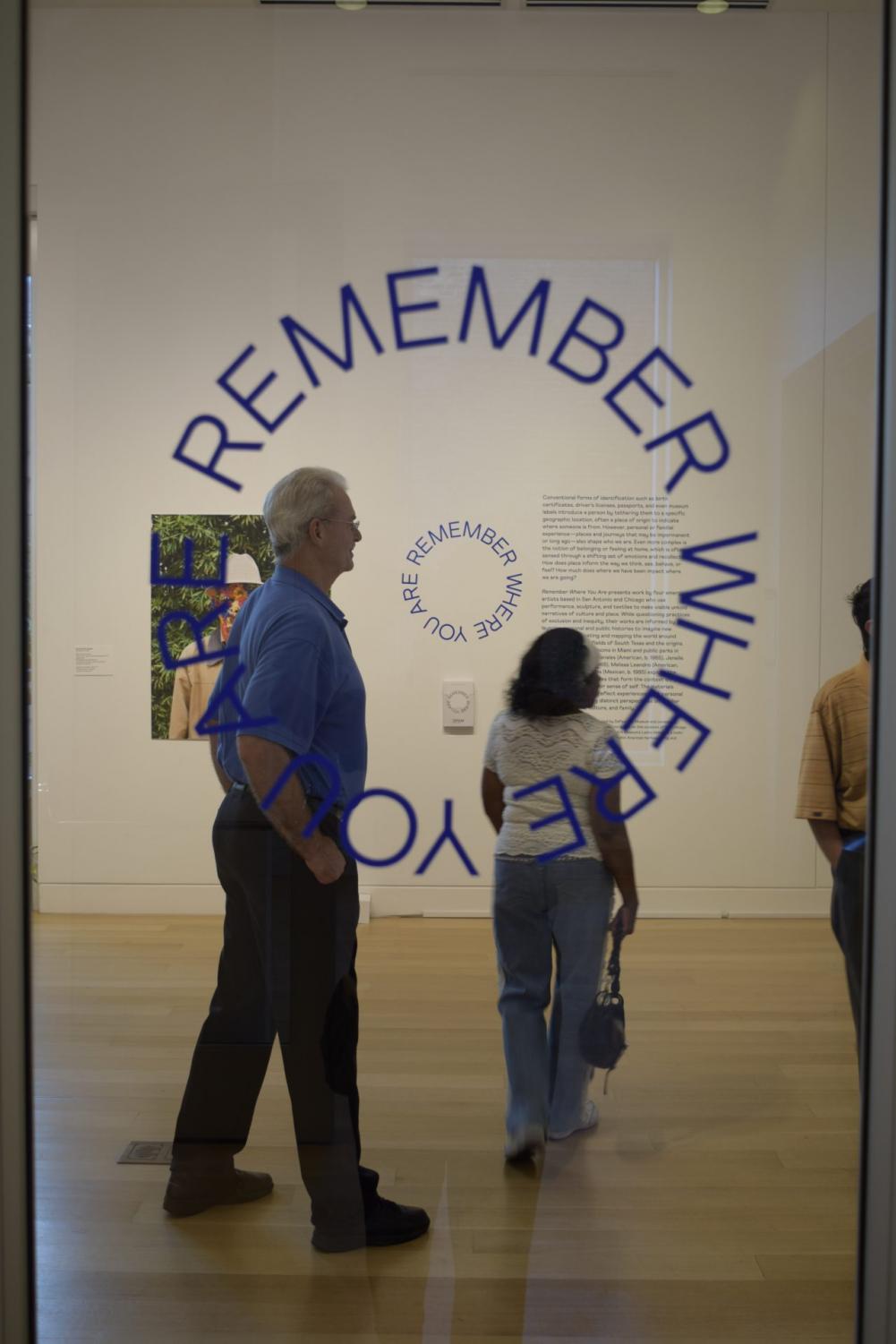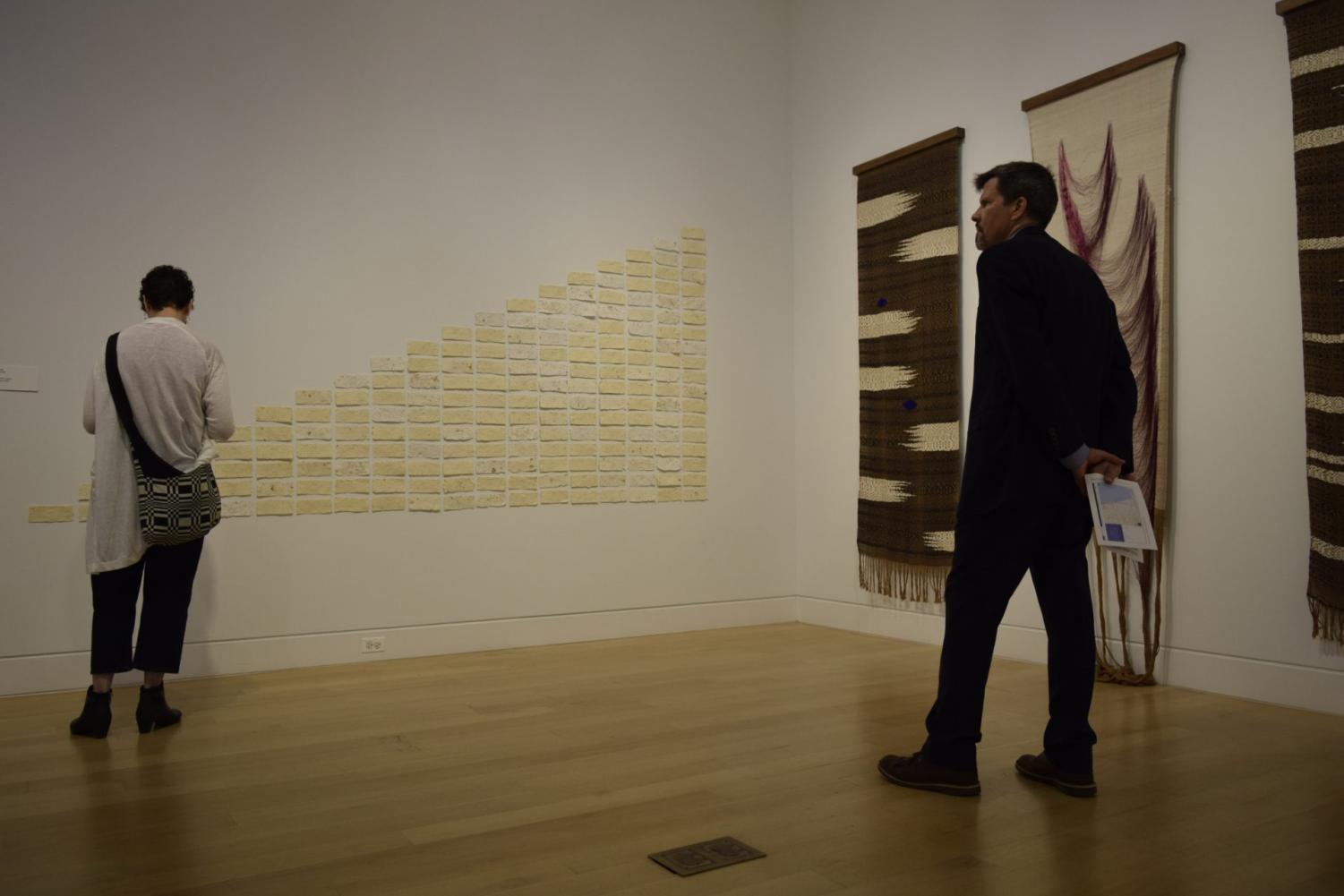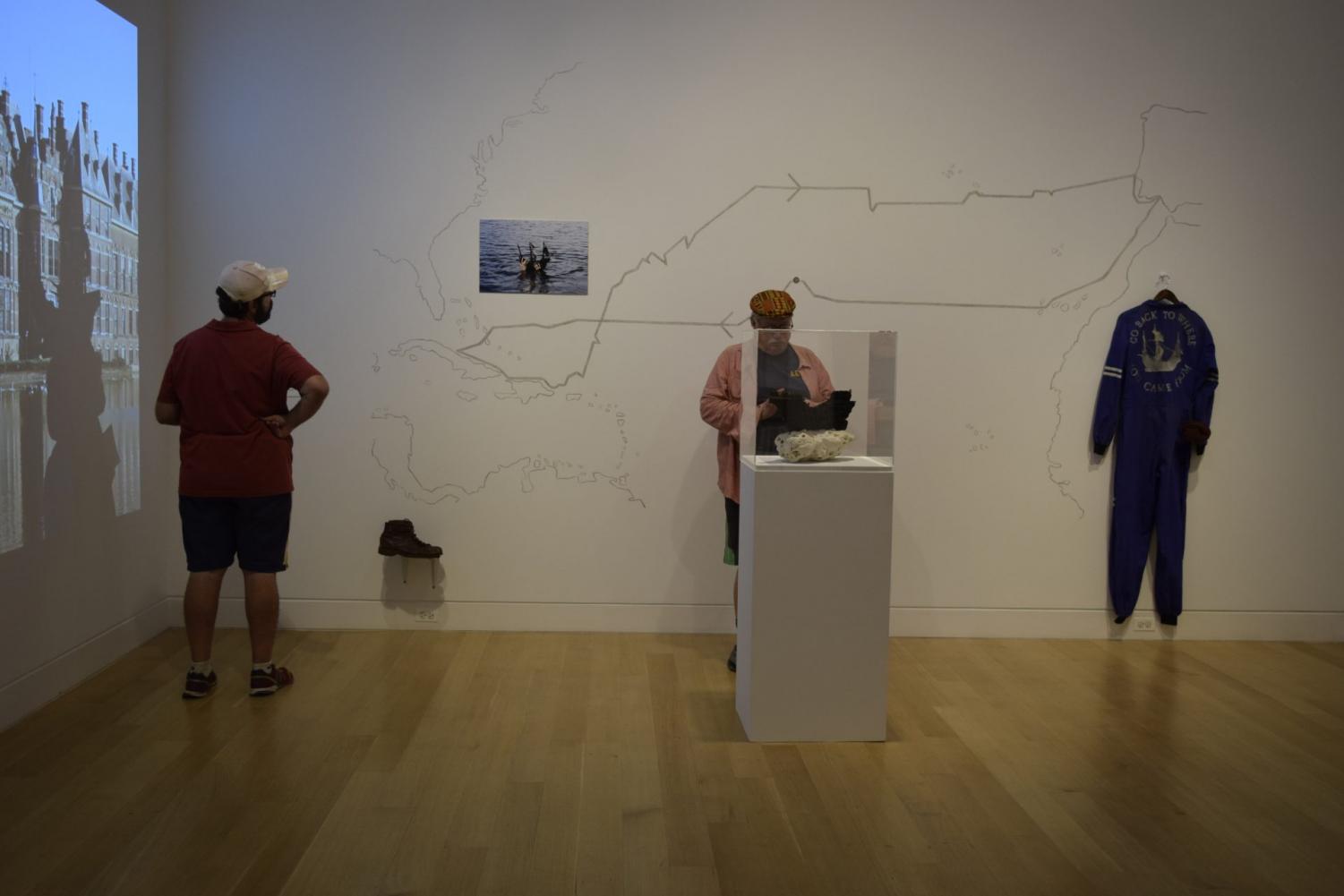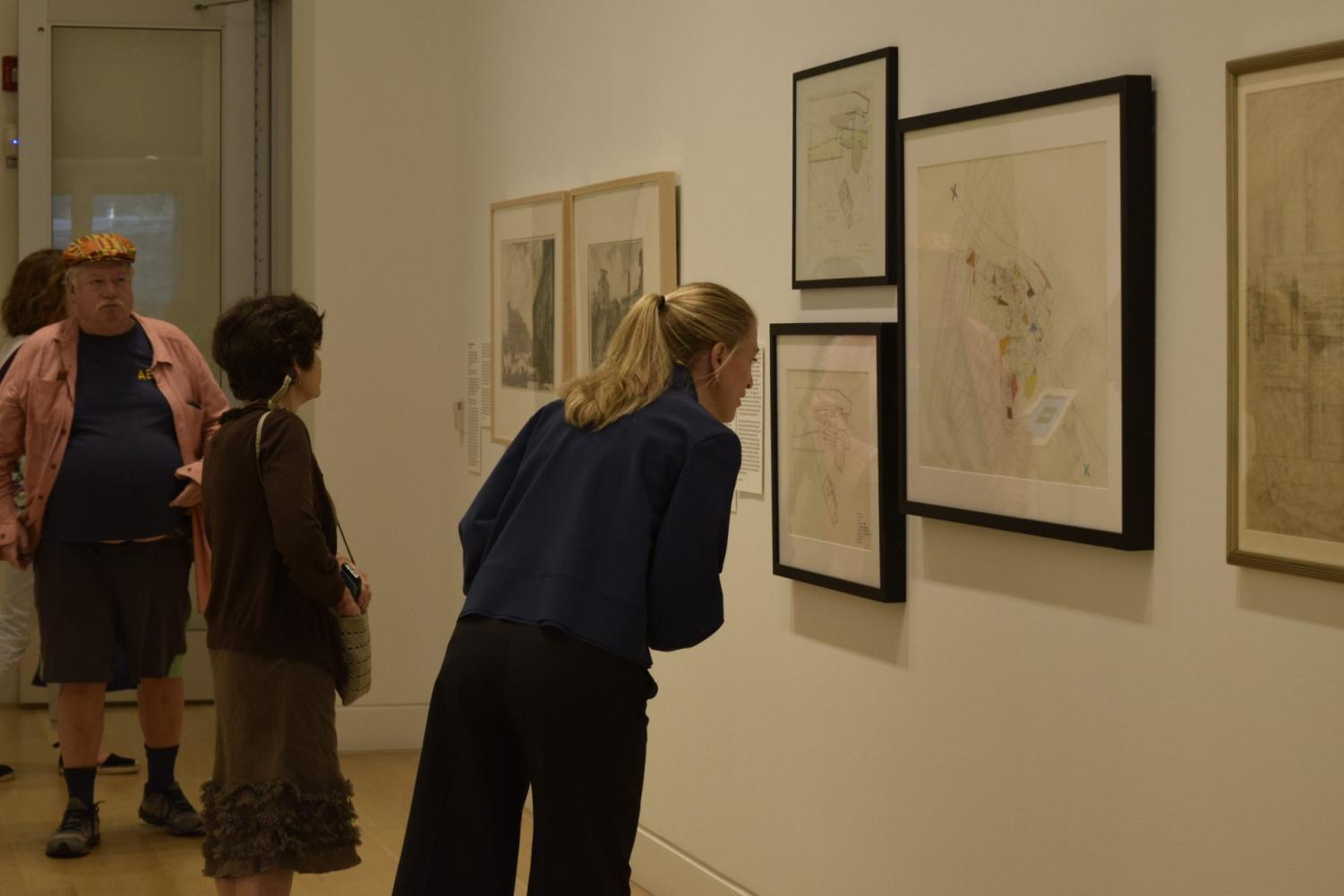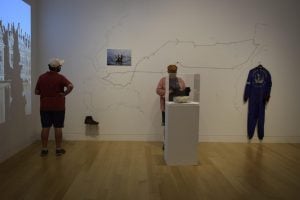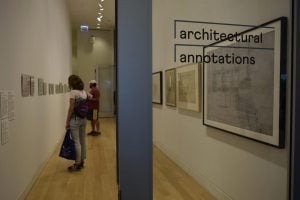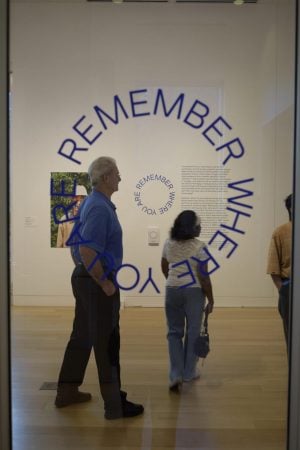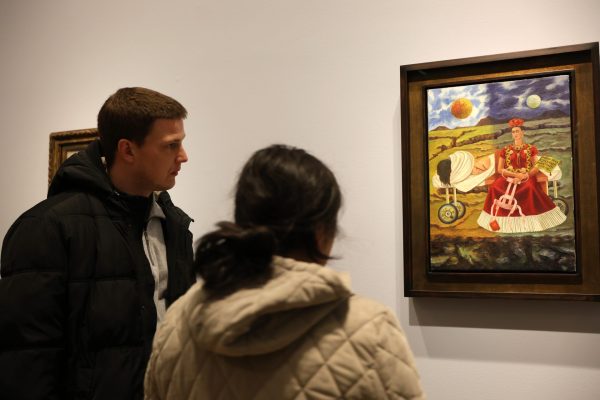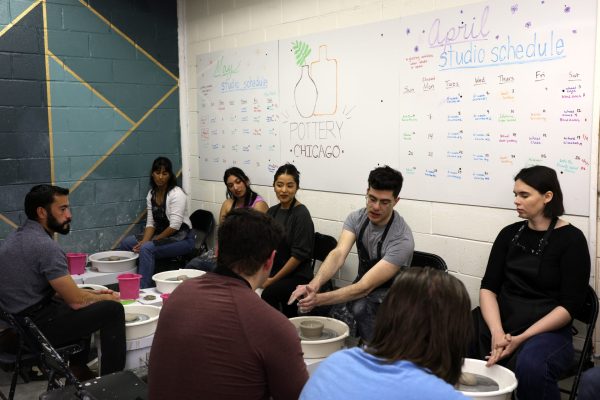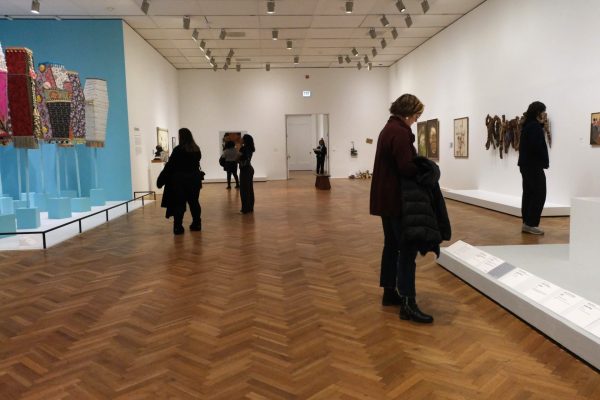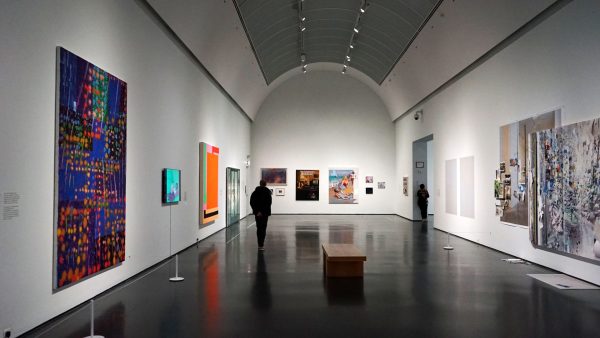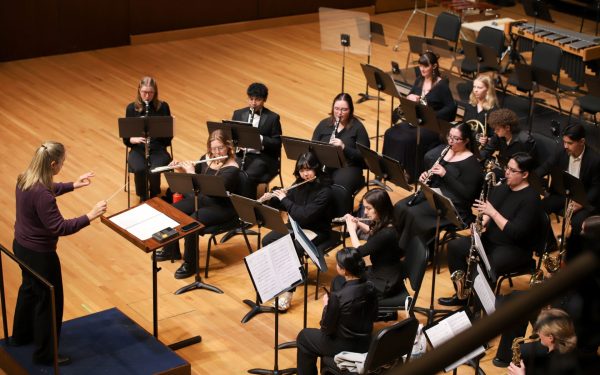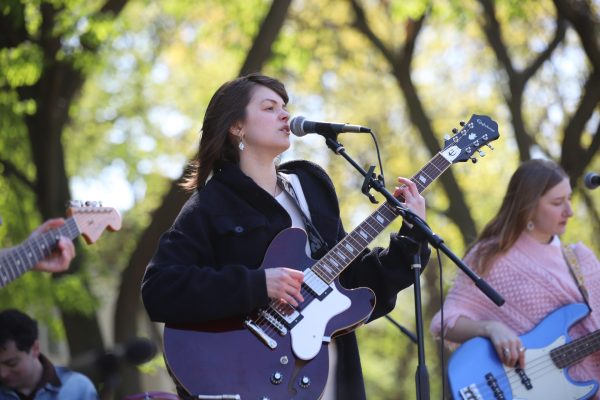DePaul Art Museum premieres 3 new exhibits in conjunction with the Chicago Architecture Biennial
Three exhibits — “Julia Fish: bound by spectrum,” ‘Remember Where You Are,” and “Architectural Annotations” — premiered at the DePaul Art Museum (DPAM) Sept. 12., each giving a nod to the Chicago Architecture Biennial and following a common theme of “remembering where you are,” by different accounts.
The first exhibit, “Julia Fish: bound by spectrum,” explores the relationship between color and the architecture of Fish’s home. Curated by Julie Rodrigues Widholm, the director and chief curator of DPAM, the exhibit has been in the works for two years.
“I respond profoundly to the slowness and patience of [Fish’s] work,” Windholm said. “It could take her a year to make one painting, and she’s been working on her pieces for this project for the last two years. Her work is a meditated respite to the hectic pace of the digital era.”
The subject of the first exhibition, Fish, curated “Architectural Annotations.” The exhibit explores the details of and connection between Chicago and Roman architecture through the synthesis of 18th century postcards.
“Having Julia Fish curate an exhibit allows insight into the way she thinks — these are here interests,” Windholm said. “It allows viewers to have a little more understanding of where she’s coming from.”
The exhibit also features a few scores by Andrew Norman, an American composer, and annotations of his work in comparison to the architecture Fish chose to display.
The third exhibit, “Remember Where You Are,” was curated by Mia Lopez, DPAM’s assistant curator, and features four artists — two from San Antonio and two from Chicago. Their work utilizes sculpture, textiles and performance to explore the untold stories of their respective heritages.
“Jenelle Esparza is really cool,” said Summer Ogden, DPAM’s head gallery monitor of one of the four artists’ work, which examines South Texas’ history of cotton and labor. “It’s interesting how she brings up her heritage and the Hispanic heritage in relation to America because it’s something often overseen, how yes, there was a lot of slavery involving black people but there’s also a lot with Hispanics that people don’t know about.”
The museum will be focusing in coming years on increasing the visibility of Latinx artists, Windholm said, but they will continue to be committed to showcasing artists from historically underrepresented communities. The museum’s mission to display lesser-known artists is what some say keeps them coming back.
“I think I’ve been here 10 times,” said Dale Engel, a Chicago resident who lives off Fullerton. “I like to support the artists, even if I might not like the art.”
All three exhibits will be on display at the museum until Feb. 23.


